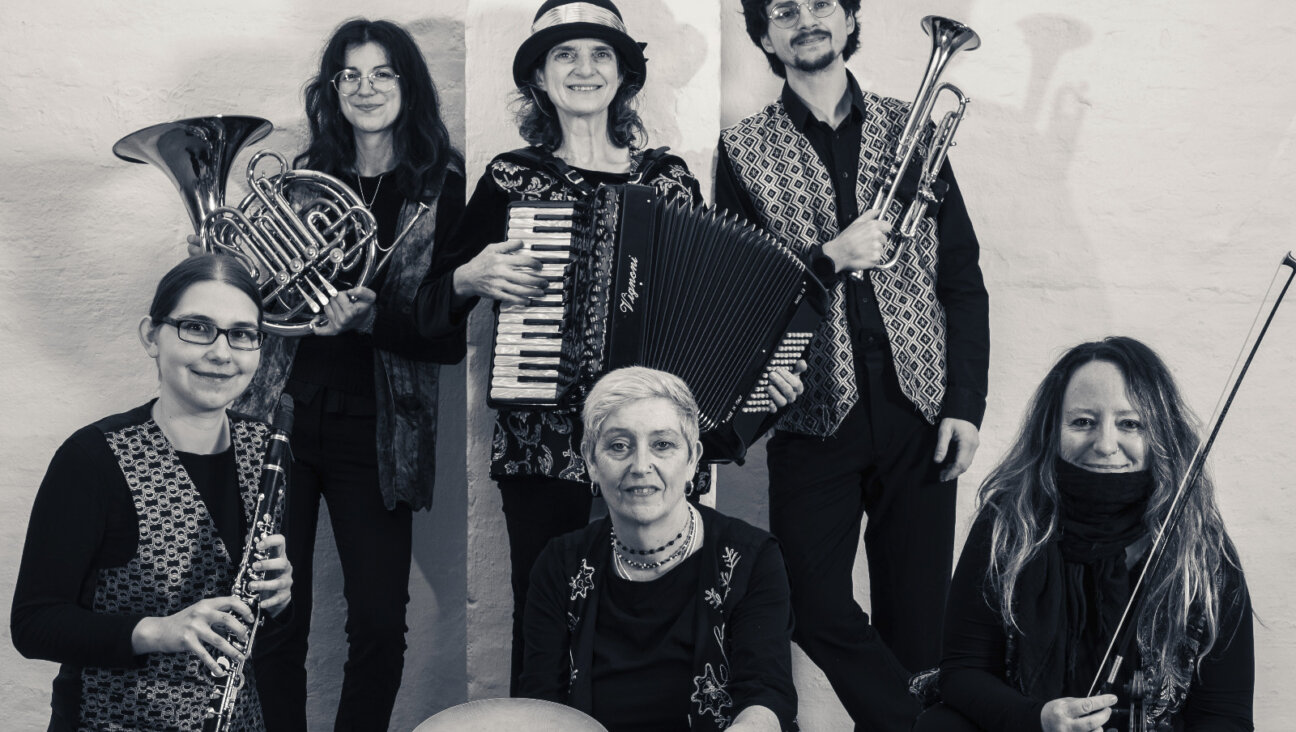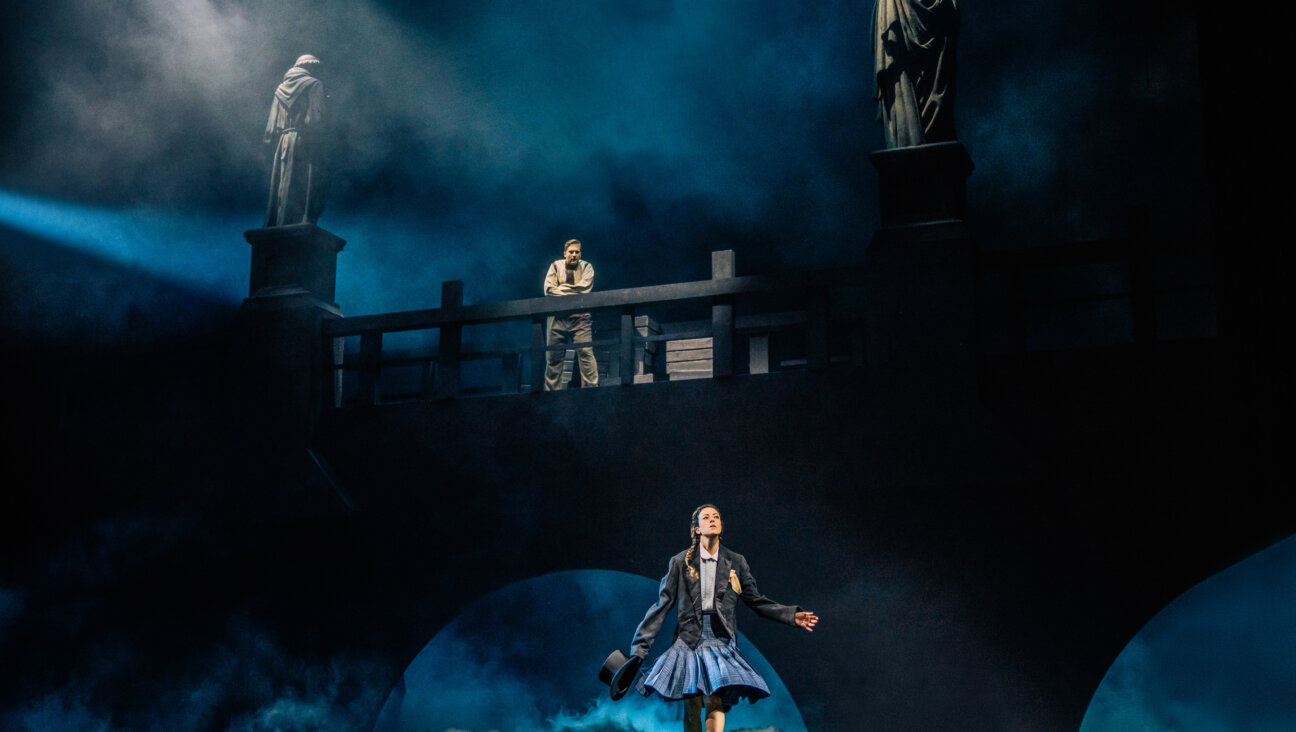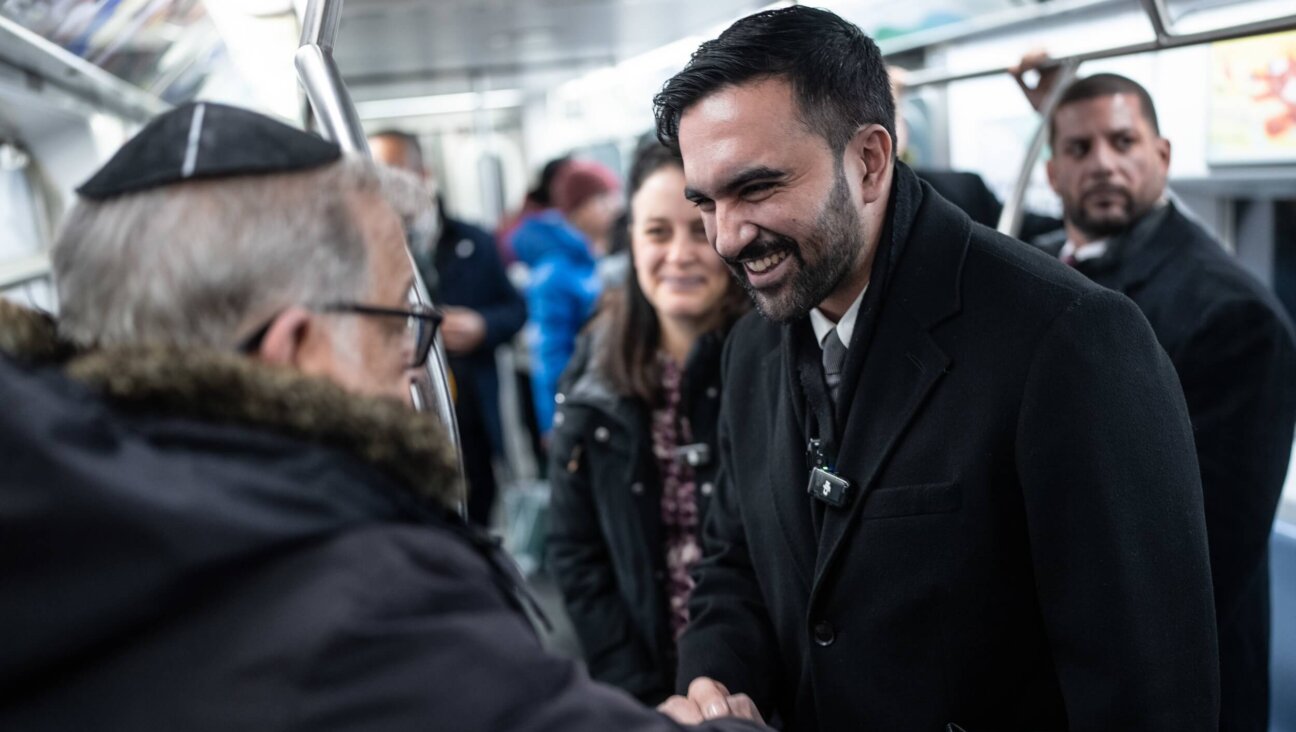For Paul Simon On His Retirement — Wisdom From My Grandpa Joe

Image by Yehuda Blum
My grandfather had a surprise for me. Seven years after buying his 1971 Buick LeSabre, he’d finally decided to get with the times and install an eight-track cassette player under the car’s dashboard. This in itself was not surprising, as he was a talented amateur pianist and violinist who genuinely loved music, even if his taste ran hard toward the Mantovani/Lawrence Welk end of the spectrum.
No, what surprised me was the tape that was playing when I climbed inside his car: “Simon and Garfunkel’s Greatest Hits.” Anything that even vaguely smacked of longhaired hippie music (or longhaired hippie anything) was absolutely anathema to Grandpa Joe; and yet, here we were, bobbing our heads in time to the di-di-di’s of “Mrs. Robinson.” “I like these boys,” he said, offering not so much an explanation as a magnanimous proclamation. “They can really sing, and they write beautiful songs. I think they’ve got something there!”
Even though I was only 12 at the time, I knew that Grandpa Joe was a little late to the party on this one, though I certainly wasn’t about to kill the mood by pedantically informing him that Paul Simon and Art Garfunkel had actually broken up when I was still in preschool. Still, until that moment, I hadn’t fully understood the sheer breadth of Simon & Garfunkel’s appeal. My parents and their friends had spun the duo’s records in fairly regular rotation while I was growing up, and songs like “The Sound of Silence,” “I Am a Rock” and [“The 59th Street Bridge Song (Feelin’ Groovy)”](Feelin’ Groovy ““The 59th Street Bridge Song (Feelin’ Groovy)””) always sounded to me like poetically composed snapshots from the grim and grimy New York City that my folks had left behind for the green parks of Ann Arbor, Michigan, when I was still a toddler. And as I grew older and began to learn about the tumultuous decade of my birth, songs like “America,” “Scarborough Fair/Canticle” and “Mrs. Robinson” became aural talismans of that era. But as far as I could tell, Grandpa Joe had no particular associations at all with Simon & Garfunkel’s music; he simply liked their voices and liked their songs. That was good enough for him — and, I suspect, for many of the others who have purchased “Simon & Garfunkel’s Greatest Hits” over the years, a record that has sold more than 14 million copies in the United States alone, making it the best-selling album in this country by any duo, ever.
While you couldn’t exactly call Simon & Garfunkel “America’s Beatles” — even if they did create “Bookends,” the closest thing any American recording artist ever got to “Sgt. Pepper’s Lonely Hearts Club Band “— they did occupy a similar position in the musical firmament. S&G and the Fab Four both wrote songs that appealed to everyone, from revolutionaries to retirees, songs that were covered by everyone from Elvis to Aretha; both groups broke up in 1970, leaving us with grandiloquent statements on their way out the door (“Bridge Over Troubled Water” and “Let It Be,” respectively), and both produced stunning bodies of work during the 1960s that cast long shadows over the musical landscape of the 1970s, as well as the subsequent solo careers of the individual former members. Just as a Beatles reunion was the constant subject of conjecture up until John Lennon’s death in 1980, Paul Simon couldn’t make a peep in the 1970s without being asked about a reunion with Art Garfunkel — and every time they did actually reunite (to record the 1975 song “My Little Town,” and for tours in 1982 and 2003–04), the questions would inevitably flare back up as soon as the two men went their separate ways.
Unlike John Lennon and Paul McCartney, though, Simon & Garfunkel were never a straight songwriting partnership; with the exception of “The Boxer,” for which Garfunkel received a co-writing credit, and the traditional “Scarborough Fair,” S&G’s biggest and best songs were all written by Simon. Garfunkel may have had the angelic voice and the groovy Jewfro, but Simon had the serious songwriting chops — and the release of his first three singles (“Mother and Child Reunion,” “Me and Julio Down by the Schoolyard” and “Duncan,” all from the 1972 “Paul Simon”), made it clear that his pen was far from dry.
Forty-eight years after Simon & Garfunkel’s split, Simon has announced that he will be retiring from the road following his current Homeward Bound — The Farewell Tour, which finishes on September 22 with a show at Flushing Meadows Corona Park. In conjunction with the final leg of the tour, the 12-time Grammy winner will also be releasing a new album, “In the Blue Light”; due out September 7, and co-produced with longtime collaborator Roy Halee, the album will feature 10 of Simon’s favorite songs from his back catalog, all rearranged and rerecorded with a stellar cast of musicians, including Wynton Marsalis, Bill Frisell, Jack DeJohnette, John Patitucci and Steve Gadd.
What’s interesting about “In the Blue Light” is that all the songs included could essentially be classified as “deep cuts.” While I do remember occasionally hearing “One Man’s Ceiling Is Another Man’s Floor” (from his 1973 smash “There Goes Rhymin’ Simon”) and “Rene and Georgette Magritte With Their Dog After the War” (from the 1983 underrated “Hearts and Bones”) on FM radio, songs like “How the Heart Approaches What It Yearns” (from the 1980 “One-Trick Pony”), “Can’t Run But” (from the 1990 “The Rhythm of the Saints”) and “Questions for the Angels” (from the 2011 “So Beautiful or So What”) have probably fallen through the cracks for all but the most ardent Simon followers. As Simon is someone who has always taken his songs and songwriting very seriously, it’s not surprising that he’d take the opportunity with “In the Blue Light” to gently tap his fans on the shoulder and say, “Hey, don’t forget about these.”
Even more interesting, perhaps, is what isn’t on “In the Blue Light”: namely, anything from his blockbuster 1986 album, “Graceland.” It could be that Simon simply considers the recordings of “Graceland” to be definitive and feels no need to revisit or remake any of the songs from that LP. But I suspect that this is also his way of deftly shifting the spotlight away from the controversial-yet-commercial colossus that revived his career but ultimately proved impossible to follow.
It’s fascinating to consider how differently Simon’s career might have played out if it hadn’t been for “Graceland.” Much like Paul McCartney, Simon spent the ’70s writing songs that were essentially a straightforward and commercially fruitful evolution of the music he’d made with his previous outfit; though fresh sounding and occasionally even inventive, hits like “50 Ways To Leave Your Lover,” “Slip Slidin’ Away” and “Still Crazy After All These Years” didn’t make anyone gasp incredulously, “Whoa, that’s Paul Simon?” He dabbled a bit in film, demonstrating his little-seen comedic talents as the sleazy record producer Tony Lacey in Woody Allen’s “Annie Hall” (Allen reportedly gave Simon carte blanche to improvise his lines, insisting only that he work the phrase “very mellow” into the dialogue), and portraying a less-successful version of himself in the Robert M. Young-directed “One-Trick Pony,” a beautiful bummer of a film that tanked at the box office in the fall of 1980 — though it did produce “Late in the Evening,” which would be the last top 10 U.S. hit of Simon’s career.
Simon’s next album, the 1983 “Hearts and Bones,” was originally conceived as a Simon & Garfunkel reunion album, to be recorded on the heels of the duo’s massively successful reunion tour — and it might actually have been a hit if Garfunkel had stayed with it up to the finish line. But there wasn’t a big market for a Paul Simon solo album in a world besotted with Duran Duran and Culture Club, and the record’s gently cerebral sound and deeply personal songs about Simon’s unraveling relationship with his second wife, Carrie Fisher (the “one and one-half wandering Jews” of the lovely title track comprised these two), ultimately doomed “Hearts and Bones” to be the least commercially successful record of Simon’s post S&G career, at least up to that point.
If you’d bet then that Simon would bounce back three years later with a multiplatinum album of considerable cultural significance, you’d have been widely mocked — and then, when it actually came to pass, probably been burned as a witch. Certainly, nobody at Warner Bros., Simon’s label at the time, was predicting big things for “Graceland”; the company released the album with little fanfare in the fall of 1986. “It could be that I’ve reached the point in my career where I can’t be a viable commercial force in popular music,” Simon told The New York Times shortly before the record’s release. “But even if the album is not a hit, in the future I don’t plan to modify anything.”
To be fair, an album by an aging singer-songwriter of diminishing commercial power newly besotted with the township music of South Africa probably didn’t look like a slam-dunk to anyone involved at the time, even Simon; certainly, very little on the record sounded like anything he’d done before. But timing is everything, and “Graceland” hit the streets at a moment when interest in South African politics and music was rapidly increasing. Though Simon had violated the worldwide cultural boycott imposed upon the country because of its government’s apartheid policies by recording part of the album in Johannesburg with South African musicians — and though the album still raises thorny questions today about cultural appropriation (and maybe straight-up thievery, since Los Lobos saxophonist Steve Berlin has claimed many times that Simon stole his band’s music for the closing track, “All Around the World or the Myth of Fingerprints”) — there’s no denying the important role that songs like “The Boy in the Bubble,” “Diamonds on the Soles of Her Shoes” and “Under African Skies” played in bringing South African music to millions of listeners in the United States and elsewhere. Along with Peter Gabriel’s “So” (which came out a few months earlier), “Graceland” inspired countless Western listeners to explore African sounds for the first time.
But the album’s unexpected success — it wound up selling an estimated 14–16 million copies worldwide — also painted Simon into a strange corner. Though he’d been working “world music” influences into his songs since the 1970 Simon & Garfunkel hit “El Condor Pasa,” he was now cast as an intrepid musical explorer who traveled the far corners of the globe to discover exotic new sounds and styles for the delectation of Western audiences. I’ll never forget working the counter at a record store when “The Rhythm of the Saints” came out; the mad rush of neighborhood yuppies to grab the follow-up to “Graceland” on its first day of release was something to behold, with many of them picking up extra copies for co-workers back at their offices. “Where is Paul going to take us now?” seemed to be the question that hung in the air.
That time out, Simon was incorporating Brazilian rhythms, instrumentations and musicians into his songs, along with West and Central African dance music. But while certainly tasteful enough, and even interesting at times, “The Rhythm of the Saints” audibly lacked the vibrant joy of “Graceland,” and Simon’s increasingly elliptical songwriting seemed almost like an afterthought to the album’s musical experiments. It was the one time in Simon’s career where he seemed to be chasing his own tail instead of his muse; though the album sold respectably (2 million copies in the United States alone), I wasn’t at all surprised when my record store wound up returning several boxes of the CD to the distributor.
It would be seven years before Simon returned with new music, this time with “Songs from the Capeman,” containing his cast-augmented performances from the Broadway musical he wrote with Derek Walcott on the life of Hell’s Kitchen murderer Salvador Agron. Savagely reviewed by critics, the stage production was a disaster, and the accompanying album didn’t fare much better; still, I couldn’t help but respect Simon for sticking his neck out with the project, and the music’s mixture of gospel, doo-wop, rock and Latin rhythms at least seemed more in his wheelhouse than another world music adventure would have been — even if I had been secretly hoping for an album of Simon songs set to Maori nose flute.
While Simon certainly hasn’t shied away from musical exploration on his subsequent albums — he collaborated with sonic wizard Brian Eno on the 2006 “Surprise,” while the 2016 “Stranger to Stranger” utilized electronic beats from Italian dance artist Clap! Clap! and custom instruments build by the late music theorist Harry Partch — they’ve all come across as overly personal and even whimsical, like the experiments of a mad scientist in his basement. Which is, frankly, why they continue to feel engaging and fresh. “There are a lot of preconceptions [about my new work] because I have been familiar to the public for 50 years,” Simon told Rolling Stone in 2016. “They go, ‘Is it going to be “Graceland”? Is it going to be “Me and Julio Down by the Schoolyard”? Simon and Garfunkel? “The Capeman”? To get people to listen with open ears, you have to really make something that is interesting, because people are prepared for it not to be interesting.”
And while he’s calling it quits from the stage, I highly doubt that “In the Blue Light” will be the last we hear from Paul Simon. It may be late in the evening as far as his career is concerned, but all the music is still seeping through. And yes, Grandpa Joe, I think he’s got something there.
Dan Epstein’s most recent book is “Stars and Strikes: Baseball in the Bicentennial Summer of ’76.” He is a frequent contributor to Rolling Stone and the Forward.

















